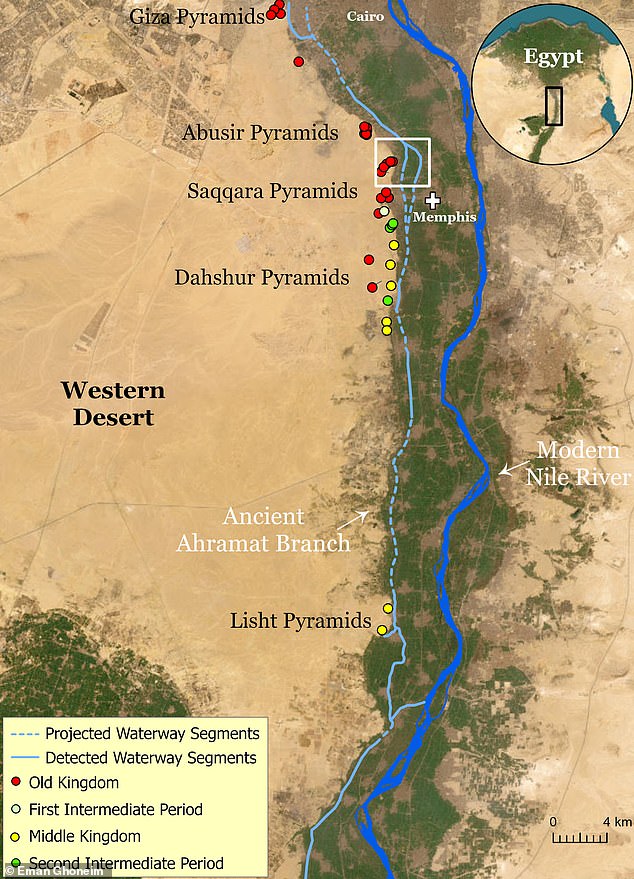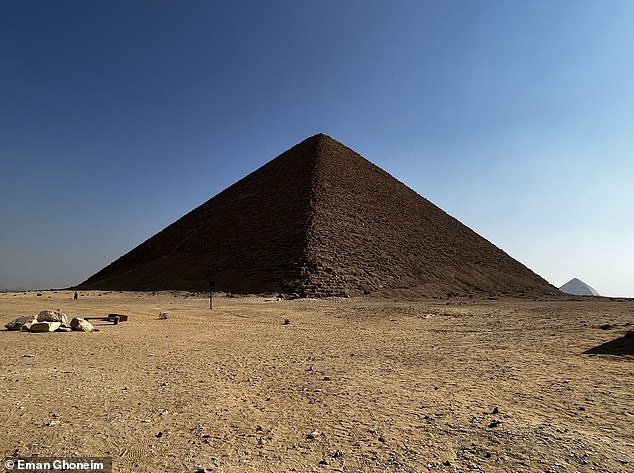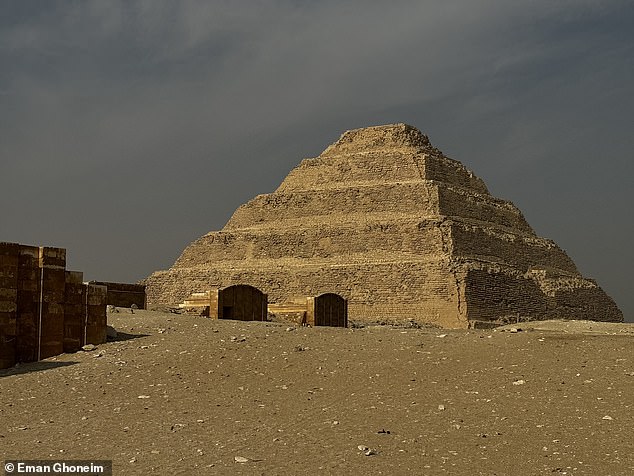- The pyramids may have been built along a lost branch of the Nile River
- It could help explain why they now find themselves in a narrow, inhospitable strip of desert.
They are the wonders of the ancient world that still leave scientists scratching their heads today.
Now, an important part of the mystery of the Egyptian pyramids may have been solved.
Archaeologists have discovered that the famous structures could have been built along a lost branch of the Nile River.
And it could help explain why they now appear to be located in a narrow, inhospitable desert strip.
Researchers at the University of North Carolina at Wilmington studied satellite images to find the possible location of an ancient river arm that ran along the foothills of the Western Desert Plateau, very close to the pyramids.
They are the wonders of the ancient world that still leave scientists scratching their heads today. Now, an important part of the mystery of the Egyptian pyramids may have been solved. In the photo: the Great Pyramid of Khufu (right) and the Pyramid of Khafre (left) in the Necropolis of the Pyramids of Giza

Archaeologists have discovered that the famous structures could have been built along a long-lost branch of the Nile River.
They then used geophysical studies and sediment cores to confirm the presence of sediments from rivers and ancient channels beneath the modern Earth’s surface.
Analysis indicated the presence of an ancient 64-kilometer-long branch that has since dried up and been hidden by farmland.
The team suggests that an increased accumulation of wind-blown sand, related to a major drought that began about 4,200 years ago, could be one of the reasons it disappeared.
It could explain the location of 31 pyramids, including the Giza pyramid complex, in this inhospitable part of the Sahara.
This location would have meant that the pyramids were easily accessible across the river arm at the time they were built.

Researchers at the University of North Carolina at Wilmington studied satellite images to find the possible location of an ancient river branch that ran along the foothills of the Western Desert Plateau, very close to the pyramids. In the photo: The Red Pyramid in the Dahshur necropolis.

The findings could help explain why they now appear to be located in a narrow, inhospitable desert strip. In the photo: The Step Pyramid of Djoser
According to the researchers, this would have been important for the transportation of construction materials.
Writing in the journal Communications Earth & Environment they said: ‘Egypt’s largest pyramid field is clustered along a narrow desert strip, but so far no convincing explanation has been given for why these pyramids are concentrated in this specific locality. .
‘Here we use satellite radar images, together with geophysical data and deep soil drilling, to investigate the subsurface structure and sedimentology in the Nile Valley, adjacent to these pyramids.
“We identified segments of an important extinct branch of the Nile, which we call the Ahramat Branch, which runs in the foothills of the Western Desert Plateau, where most of the pyramids are located.
‘Many of the pyramids, dating from the Old and Middle Kingdoms, have causeways leading to the branch and ending at Valley Temples which may have acted as river ports along it in the past.
“We suggest that the Ahramat branch played a role in the construction of the monuments and that it was simultaneously active and used as a transport waterway for workers and construction materials to the pyramid sites.”


